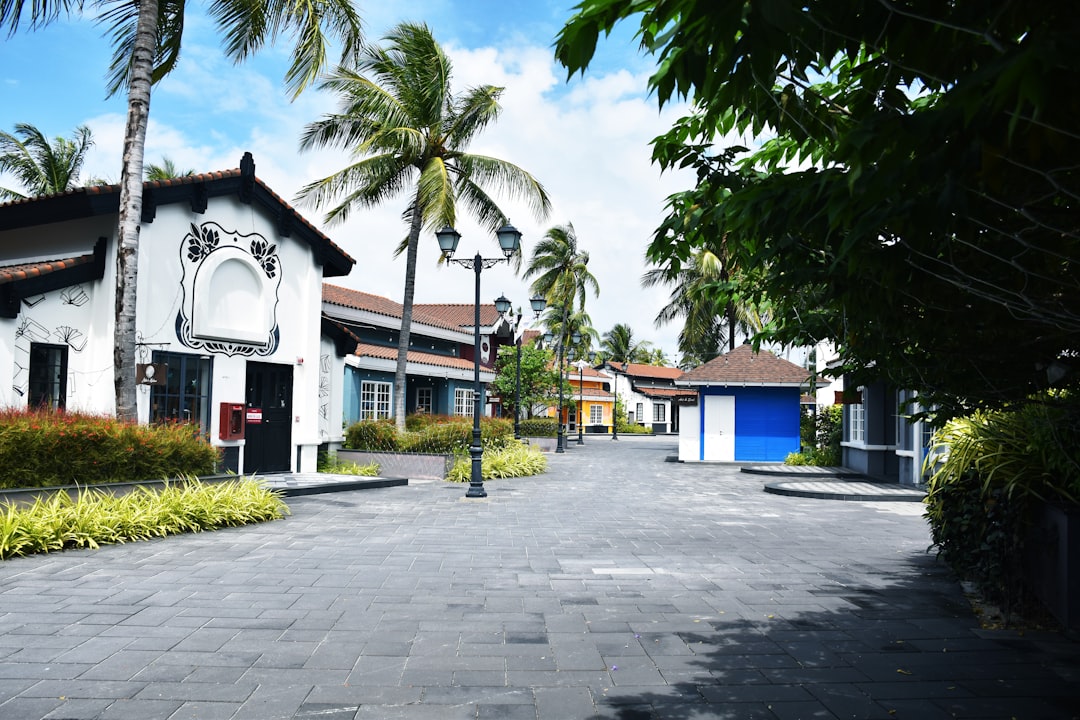

Engage prospects with a scan and streamline customer engagement with FREE QR code marketing tools by Sona – no strings attached!
Create a Free QR CodeFree consultation

No commitment

Engage prospects with a scan and streamline customer engagement with FREE QR code marketing tools by Sona – no strings attached!
Create a Free QR CodeFree consultation

No commitment
Property management companies face growing pressure to deliver responsive, technology-driven experiences that meet the rising expectations of both property owners and tenants. In a competitive market where seamless communication, efficient lead capture, and actionable analytics are crucial, traditional analog tools like paper brochures, static signage, and manual forms often fall short. These classic methods create friction, reduce responsiveness, and lack the capability to directly track and attribute leads, making it easy for high-value prospects to slip through the cracks and for valuable engagement data to remain uncollected.
The adoption of QR codes offers property management businesses a direct bridge from physical environments such as rental properties, open house events, for-lease signage, and print advertising into targeted digital journeys. By leveraging QR codes, companies can instantly capture interest, provide on-demand information, and automate the lead capture process, all while gathering rich, real-time data on tenant and prospect behavior. This helps close the gap between anonymous in-person interactions and trackable digital leads, which is increasingly important for prioritizing timely outreach and minimizing lost opportunities.
This guide explains how property management companies can strategically implement QR codes to elevate real estate marketing, streamline operations, and convert offline moments into qualified leads. Explore practical frameworks and strategies to deploy QR codes at scale and see how modern solutions simplify the customer experience while bringing new levels of visibility and control to the property marketing funnel.

QR codes bridge the gap between physical property touchpoints and digital lead generation, helping property management companies turn every real-world interaction into a source of measurable business value. When deployed with intention, they transform analog workflows into digital pipelines that capture, score, and route interest to the right team member in minutes.
Start by aligning QR use cases with your core goals: more scheduled tours, faster leasing decisions, clearer maintenance communication, and stronger owner acquisition. Then design placements and calls to action that prompt the next best step for renters or owners, while capturing the data your team needs to respond quickly and effectively.
This playbook is designed for forward-thinking real estate marketers and decision-makers eager to automate workflows and convert interest into pipeline growth. When prospects can request tours, apply, or ask questions instantly on their phones, you reduce the chances of losing them to competitors and increase the quality of every conversation your leasing teams have.
Instead of relying on handwritten open house lists or stacks of flyers, QR-powered journeys enable prospects to self-serve on their mobile devices, funneling them to tailored landing pages or chat assistants that capture key details in seconds. With robust tracking, every interaction can be attributed to its source, improving campaign measurement and follow-up timing while giving leadership clear visibility into what drives occupancy and owner retention.

Property management companies encounter unique challenges in bridging offline property marketing and online engagement. Anonymous walk-ins, untracked brochure pickups, and delayed callbacks can leave potential tenants or owners uncounted, while competitors seize the moment. QR codes solve this by transforming casual interest into a measurable, actionable digital signal that your team can handle immediately.
They also help unify the journey from physical surfaces to digital services, keeping information accurate and engagement measurable. For portfolios spanning multiple buildings, neighborhoods, or asset classes, QR codes provide a scalable system to manage many campaigns with centralized control.
In short, QR codes turn hidden offline engagements into trackable touchpoints, empowering property managers to personalize outreach, optimize spend, and improve response times. The outcome is a marketing and operations engine that is more predictable, accountable, and customer centric.

QR codes are flexible enough to support a wide range of property management goals, from lead generation to tenant satisfaction. Selecting the right format helps ensure each scan triggers the most relevant next step for the user while collecting the data your team needs to follow through.
For leasing teams and property managers, a combination of dynamic web link codes and action-triggering formats covers most scenarios. Dynamic codes are especially useful since destinations, tracking parameters, or content can be updated without reprinting.
Dynamic QR codes provide the flexibility to update property details or forms as listings change, which ensures continuity between printed materials and current online content. Platforms like Sona QR help teams generate, brand, and manage these codes centrally, making it simple to track performance and adjust campaigns in real time.

Growth is often stunted by fragmented touchpoints that lack measurable outcomes: anonymous walk-bys, untracked phone calls, or interest that never translates to action. QR codes help convert those moments into measurable lead signals that inform better decisions and faster follow-ups.
Focus on the locations and materials that already reach your audience. Strategic placement turns passive exposure into active engagement while giving you the granular data needed to understand demand by property, daypart, or neighborhood. For more real estate QR ideas, explore practical examples.
Optimizing QR code placement by property type, audience behavior, and channel ensures that physical assets do more than inform, they convert. With testing and iteration, you can zero in on the placements that drive consistent tour bookings and completed applications.

Property management teams often struggle with delayed lead capture and incomplete data, which undermine personalized follow-up and timely conversions. QR codes streamline these interactions, bringing speed and transparency to the leasing and resident experience.
By structuring your QR strategy around high-intent moments, you can systematically increase inquiry rates, accelerate service resolution, and create a clear attribution model for marketing efforts. Here are three high-impact use cases to prioritize first:
By systematically deploying QR codes across these touchpoints, property managers can increase qualified inquiries, improve response times, and gain transparency into which campaigns generate leases. The result is a data-backed marketing engine that replaces manual processes and guesswork with automation and evidence.
A critical challenge in property marketing is the inability to segment and retarget leads who show interest in person but never fill out a web form. Every QR code scan delivers intent and behavioral data: where they scanned, what they scanned, and when they scanned. With the right setup, these signals become the foundation for precise segmentation and follow-up.
Use unique QR codes for different audiences and journey stages so that each scan builds a cleaner, more actionable dataset. Then sync those segments to your CRM, email service, and ad platforms to trigger relevant nurture sequences. See Sona’s Playbook on intent-driven retargeting for tactics.
Industry-leading solutions like Sona QR support automation, segmentation, and real-time syncing, which means you retarget based on observable real-world behavior rather than assumptions. The payoff is higher engagement, lower acquisition costs, and fewer missed opportunities.
Cross-channel property marketing often falters because offline materials are hard to measure, which leads to attribution confusion and less effective spend. QR codes serve as connectors that unify print, signage, events, and digital channels into a single, trackable funnel. For measurement fundamentals, see offline attribution.
By giving every physical asset a unique code and destination, you can monitor demand property by property, neighborhood by neighborhood, and channel by channel. This clarity allows you to invest in the tactics that convert and pause the ones that do not.
With a centralized platform like Sona QR, you can manage all codes, monitor performance, and sync scan data with your CRM and ad platforms. This connected funnel helps your team focus on impact rather than guesswork, from first scan to signed lease.
Executing QR campaigns well requires clarity, design discipline, and consistent optimization. Use the following steps to plan, launch, and scale programs that capture interest and convert it into measurable results across your portfolio.
Clarify what you want the QR code to achieve and who it serves. For property management companies, common objectives include booking tours, capturing owner inquiries, gathering maintenance feedback, and driving app adoption. Each objective should map to a clear business outcome such as more completed applications, faster service resolutions, or increased owner leads.
Tie your goals to metrics that your team can track. Examples include scan-through rate from signage, scan-to-form completion on mobile landing pages, tour scheduling rate, and average response time after scans. Establish a baseline for comparison so you can quantify lift once campaigns are live.
Select static codes for unchanging destinations like a PDF brochure or evergreen building guide. Choose dynamic codes for campaigns that need tracking, retargeting, or frequent updates such as rotating vacancies, promotions, or new open house dates. Dynamic codes also simplify A/B testing since you can change destinations without reprinting.
If you plan to enrich contacts and automate follow-ups, dynamic codes with UTM parameters are essential. Platforms like Sona QR make it simple to add tracking, modify destinations, and consolidate analytics by property and channel.
Brand the QR code with your logo and colors, include a clear call to action such as Scan to schedule a viewing, and add context about what the user will get after scanning. Use high contrast, maintain a clean quiet zone around the code, and ensure a minimum size of at least 1 x 1 inch for handheld materials and larger for signage viewed from a distance.
Test scannability across iOS and Android devices, assorted camera apps, and typical lighting conditions. Validate placement on windows, door hangers, brochures, and mailers. If scanning from outside, confirm the code is large enough to be read through glass and from the sidewalk.
Place QR codes where intent is highest: property signage, window displays, listing sheets, welcome packs, and neighborhood mailers. Match placement to audience behavior. For example, deploy larger codes for drive-by traffic, and smaller but clearly labeled codes on printed materials that prospects hold.
Document your deployment map so each code is tied to a specific property, channel, and creative. This enables precise performance comparisons and helps teams uncover the combinations of placement and messaging that create the most tours and applications.
Monitor scan volume, conversion rate, and downstream outcomes in a central dashboard. A/B test destinations such as 3D tour first versus pricing first. Adjust CTAs, creative, and placement based on data rather than assumptions. Share insights with teams so wins can be replicated across the portfolio. See QR advertising guide for creative testing ideas.
Integrate with your CRM and property management software to auto-enrich leads, assign follow-ups, and trigger workflows like SMS confirmations or email reminders. With Sona QR, you can centralize reporting, automate alerts, and connect scans to revenue outcomes, which accelerates decision making and improves budget allocation.
A persistent challenge in property management is linking marketing spend to outcomes like booked tours, signed leases, or owner contracts. Without tying scans to these milestones, teams struggle to prove impact or double down on what works. Robust tracking closes this loop and gives leaders confidence that investments drive measurable results.
Modern QR platforms capture granular data at the moment of scan, then integrate it with your CRM and ad tools, enabling account identification and downstream activation. With consistent UTM usage and property identifiers, you can analyze performance by neighborhood, building, or campaign while maintaining a unified picture of the funnel.
Technology like Sona QR and Sona.com makes it possible to move beyond simple engagement metrics to closed-loop attribution. Sona is an AI-powered marketing platform that turns first-party data into revenue through automated attribution, data activation, and workflow orchestration. You see not only which codes were scanned, but how those scans contributed to pipeline and revenue, which turns QR from a novelty into a performance channel. For reporting depth, read how to measure marketing influence on the sales pipeline.
Many property management teams leave value on the table because QR campaigns are deployed inconsistently or without the analytics discipline needed for optimization. A few targeted improvements can radically increase scan rates, conversion, and data quality across your portfolio. Explore enterprise QR solutions for larger teams.
Focus on tactics that make offline media measurable, keep the journey moving after the first scan, and educate staff to promote scanning at every relevant moment. When everyone understands the why and the how, adoption climbs and outcomes improve.
Property management QR campaigns that run on platforms like Sona QR make it easier to execute, track, and optimize at scale. With centralized management, integrations, and analytics, your team can build a repeatable growth engine across diverse properties and audiences.
QR codes have emerged as an essential strategy for property management companies seeking to create seamless, data-driven marketing and operations. They turn every physical listing, flyer, or lobby display into a digital entry point, making it simple for renters and owners to take the next step while giving your team the analytics needed to act quickly. More importantly, they address persistent industry challenges: untracked offline engagement, lagging outreach, incomplete data, and unclear ROI.
By integrating QR codes with property management software and CRM systems, you can create a connected, measurable customer journey that accelerates conversions and maximizes marketing ROI. With Sona QR and Sona.com, every scan becomes a signal you can act on: the right follow-up, to the right person, at the right time, with visibility into how those actions drive tours, leases, and owner relationships.
For property management companies committed to growth, QR codes unlock a higher standard of responsiveness, personalization, and attribution. As tenants and owners increasingly expect digital convenience, the teams that deploy thoughtful QR strategies today will set the benchmark for tomorrow. Start by digitizing your highest-intent touchpoints and build from there, turning once anonymous interactions into measurable, high-quality leads that fuel sustained portfolio performance. Start creating QR codes for free.
QR codes have transformed property management companies from traditional lead capture methods into dynamic, data-driven growth engines. Whether it’s attracting prospective tenants, enhancing tenant engagement, or streamlining communication, QR codes replace cumbersome processes with instant, mobile-friendly interactions that capture valuable lead information and boost conversion rates. Imagine instantly identifying which property listings, brochures, or signage generate the most qualified leads—and optimizing your marketing efforts in real time.
With Sona QR, property managers can effortlessly create dynamic, trackable QR codes that update campaigns without reprinting and link every scan directly to actionable insights and revenue opportunities. No more guesswork or missed leads—just smarter, more efficient campaigns that accelerate tenant acquisition and retention. Start for free with Sona QR today and turn every scan into a new lease, a satisfied tenant, or a thriving property portfolio.
Property management companies provide services such as leasing, maintenance communication, owner acquisition, tenant onboarding, and resident services, often supported by technology to enhance responsiveness and streamline operations.
Choose a property management company that leverages technology like QR codes for efficient lead capture, offers clear success metrics, provides fast and personalized communication, and integrates well with CRM and property management software for data-driven decision making.
QR codes enable instant lead capture from physical touchpoints, provide real-time data on prospect behavior, bridge offline and online engagement, allow dynamic content updates without reprinting, and improve tracking, attribution, and cost efficiency in marketing campaigns.
They use QR codes to digitize lead capture, automate workflows, personalize follow-ups, enable dynamic content delivery, integrate scan data with CRM systems, and analyze campaign performance to improve leasing, maintenance requests, resident engagement, and owner acquisition.
The article does not provide specific names of top-rated property management companies by area but emphasizes the importance of choosing companies that adopt advanced technologies like QR code platforms such as Sona QR for enhanced marketing and operational efficiency.
Use Sona QR's trackable codes to improve customer acquisition and engagement today.
Create Your FREE Trackable QR Code in SecondsJoin results-focused teams combining Sona Platform automation with advanced Google Ads strategies to scale lead generation

Connect your existing CRM

Free Account Enrichment

No setup fees
No commitment required

Free consultation

Get a custom Google Ads roadmap for your business






Launch campaigns that generate qualified leads in 30 days or less.
